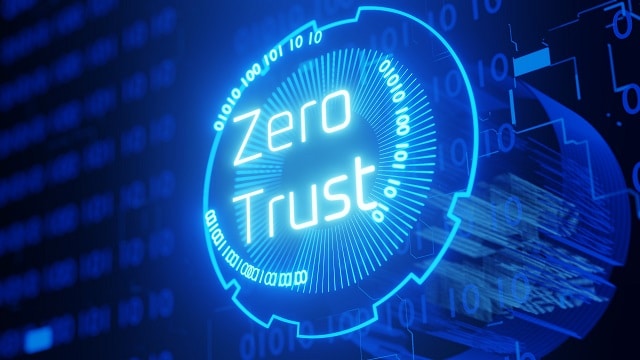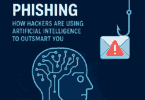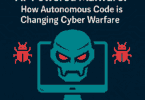Introduction
Zero Trust Security is an important topic in today’s digital landscape. Many people have interest in learning more about it. In today’s digital landscape, data breaches and cyber attacks are becoming increasingly common. Organizations are under constant threat from hackers and other malicious actors. The hackers try to steal valuable information, compromise systems, and cause disruption. To combat these threats, many organizations are adopting this security.
In this blog post, we will explore more in detail, including the principles behind the model and the benefits it provides. And let us discuss how to implement it in an organization. We will also discuss common challenges and solutions. As well as the future of cybersecurity and the role that Zero Trust Security will play. Whether you are an IT professional or a business owner, this post will provide you with valuable insights into one of the most important security models of our time.
What is Zero Trust Security?
Zero Trust Security is a security model. This security model is based on the principle of “Never Trust, Always Verify,”. It means that all access requests must be authenticated and authorized, regardless of the user’s location or device used. It assumes and treats all connected devices, users, and applications in systems are potential threats. Therefore, you can not trust these by default in that model. In this model, access to resources and data is granted after the user’s identity is verified and the access request is authorized.
In this approach, a wide range of security technologies are employed. They include multi-factor authentication, identity and access management, and network segmentation. This model focuses on securing data and resources based on identity and context rather than location. These security technologies protect the network system from data breaches, insider threats, and other cyber attacks. This model is gaining popularity as a way to provide a more secure and flexible IT environment for organizations and businesses of all sizes.
Zero Trust Security is the shift from the previous strategy of “trust but verify” to “never trust, always verify.” This security model relay on strong authentication and authorization for every user and device. The security process also includes analytics, filtering, and logging to verify user behavior and continually monitor for any compromised signal.
The previous strategy follows a maxim “castle-and-moat” network approach to cybersecurity. It means any system outside the network perimeter is terrible. But zero trust security differs from it. And it assumes security risks are present both outside and inside. Due to the shortcomings of the castle-and-moat approach, organizations are now slowly adopting zero-trust architecture.
How Does Zero Trust Security Work?
By default, the Zero Trust Security model assumes that no user or device can be trusted, even if it is inside the organization’s network perimeter. In this approach, every access request requires authentication and authorization, regardless of the user’s device or location. It enforces the principle of least privilege. In the Principle of Least Privilege, the users are only granted access to the resources they need to perform their work functions and nothing more. Users are only able to access the information and applications that are necessary to do their jobs.
This model aims to reduce the risk of data breaches and other cyber threats and other cyber threats. Implementing this cyber security model can limit access to sensitive formations, tools, and applications. It also helps organizations to detect and respond to security breaches and security incidents more quickly. All the access requests are closely monitored and logged in this model.
To implement zero trust security, organizations need to take a holistic approach. This approach involves people, processes, and technology. It involves implementing strong authentication mechanisms to protect data in transit and at rest. And it continuously monitors access requests for anomalies and suspicious activity. It aims to reduce the risk of data breaches and other cyber threats by limiting access to sensitive information and applications. As all the access requests are closely monitored in real time, in this model, the organizations easily detect and respond to security incidents quickly.
The Zero Trust Security model requires a shift away from traditional perimeter-based security models. Traditional perimeter-based security models assume that devices and users inside the network are trusted by default. Instead, it focuses on securing data and resources based on identity and context rather than location.
Why is Zero Trust Security important?
Zero Trust Security is important for several reasons.
First
Firstly, the traditional perimeter-based security models assume that devices and users inside the network are trusted by default. But it is no longer sufficient to protect organizations against modern cyber threats. The network perimeter has become more porous with the increasing use of cloud services, mobile devices, and remote work. Therefore, it is easier for hackers to gain access to sensitive data and systems. It is also known as the perimeterless security model.
Second
Second, Zero Trust Security helps to limit the risk of data breaches and other cyber threats. It ensures that users only have access to the information and applications they need to perform their job functions. By limiting access, the attack surface is reduced. It makes it more difficult for hackers to access sensitive information or systems.
Third
Third, Zero Trust Security provides better visibility into access requests. With it, organizations detect and respond to security incidents more quickly. These models continuously monitor access requests for anomalies and suspicious activity. It helps organizations to identify potential security threats before they become major incidents.
Fourth
Fourth, Zero Trust Security helps organizations comply with regulatory requirements by providing better access to sensitive information and applications. Many regulatory frameworks, such as the GDPR and HIPAA, require organizations to implement strong access controls to protect sensitive data.
Fifith
Fifth, adopting a Zero Trust Security model helps organizations to build a culture of security awareness. It promotes a security-first mindset among employees. By prioritising security and continuously monitoring access requests, organizations can reduce the risk of human error and improve overall security posture.
Therefore this technology is essential because it protects organizations against modern cyber threats. And it limits the risk of data breaches and provides better visibility into access requests. This model helps with regulatory compliance. And it promotes a culture of security awareness.
The Principles of Zero Trust Security
Zero Trust Security depends on several key principles essential to implementing the model effectively.
It laid on three fundamental principles
- All entities are not trustworthy in default
- Least privilege access is enforced
- Constant monitoring for any security breach
The zero trust approach treats all traffic, whether inside the perimeter or outside, as hostile.
These principles are followed in detail:
Verify Explicitly:
In this security model, all access requests must be explicitly verified and authorized. It needs to be verified irrespective of the user’s location or device used. This means that users must be authenticated and authorized for every access request. And the access should be granted only on a need-to-know basis.
Least Privilege:
The principle of least privilege is central to Zero Trust Security. This principle states that users should only be granted access to the resources. The users need to perform their job functions and nothing more. It reduces the attack surface and limits the risk of data breaches and other cyber threats.
Assume Breach:
This principle assumes that a breach has already occurred or is imminent. And in this principle, no user or device is trusted by default. This means that all access requests must be closely monitored and verified. Any suspicious activity must be investigated promptly.
Micro-Segmentation:
Micro-segmentation is the practice of dividing the network into small, isolated segments. It helps to limit the impact of a potential breach. This principle contains any potential security incidents. It prevents them from spreading to other parts of the network.
Continuous Monitoring:
Continuous monitoring is essential to a Zero Trust Security model. By monitoring access requests for anomalies and suspicious activity, organizations detect and respond to security incidents more quickly.
Use A Least-Trust Network:
A least-trust network is a network that assumes that every device and user is untrusted by default. This means that access must be verified and authorized for every access request, regardless of the user’s location or device used.
The principles of Zero Trust Security include verifying access explicitly, implementing the principle of least privilege, assuming breach, micro-segmenting the network, continuous monitoring, and using a least-trust network. Using all these principles, organizations build a more secure and resilient security posture.
The Principle of Least Privilege:
The Principle of Least Privilege is a fundamental principle of information security. And it is the core principle of Zero Trust Security. It states that users or processes should be granted only the minimum level of access necessary to perform their job functions. And it is nothing more.
The idea behind the Principle of Least Privilege is that it limits the access. By limiting, the attack surface is reduced. It makes it more difficult for attackers to gain unauthorized access to sensitive information or systems. When access is granted based on need-to-know, the risk of data breaches and other cyber threats is significantly reduced.
The Principle of Least Privilege applies to all types of access. It includes access to data, systems, applications, and networks. Access should be granted on a need-to-know basis. Users are not granted access to resources that are not required to perform their job functions.
In addition, access should be reviewed and updated regularly. It ensures that users only have access to the resources they need. Further, that access is revoked when it is no longer necessary.
Implementing Principle of Least Privilege
Implementing the Principle of Least Privilege is challenging. Particularly it is hard to implement in large organizations with complex IT environments. The organizations are using these tools, such as identity and access management (IAM) solutions, role-based access controls (RBAC), and privileged access management (PAM).By implementing these tools, organizations ensure that access is granted based on need-to-know. And the risk of data breaches and other cyber threats is minimized.
In all, the Principle of Least Privilege is a core principle of information security and a key component of Zero Trust Security. It requires organizations to grant access based on need-to-know. And it limits access to the minimum level necessary. It reviews and updates access regularly to ensure that users only have access to the resources they need to perform their job functions.
Continuous Monitoring and Risk Assessment:
Continuous monitoring and risk assessment are critical components of a Zero Trust Security model. This model continuously monitors access requests and network activity. The organizations quickly detect and respond to security incidents before they cause significant harm. Similarly, it conducts regular risk assessments, and organizations identify potential vulnerabilities. It prioritizes security efforts to reduce risk.
Continuous monitoring involves the ongoing collection, analysis, and reporting of security-related data. It includes access logs, system logs, network traffic data, and security alerts. By analyzing this data, security teams identify anomalies and potential threats. They take action to prevent them from causing harm.
Continuous monitoring enables organizations to identify and respond to insider threats. It is particularly challenging to detect and prevent. By monitoring user activity, organizations identify suspicious behaviour, such as unusual login patterns or attempts to access resources outside of normal working hours.
Risk assessment involves identifying, analyzing, and evaluating potential threats and vulnerabilities to an organization’s IT infrastructure, data, and operations. This model conducts regular risk assessments, and organizations and identifies potential weaknesses in their security posture. And it prioritizes efforts to address them.
Risk assessments typically involve identifying potential threats and vulnerabilities. And it evaluates the likelihood and potential impact of each threat. It determines the level of risk associated with each. Based on the assessment results, organizations prioritize security efforts and allocate resources to address the most significant risks.
Continuous monitoring and risk assessment are essential for a Zero Trust Security model. It continuously monitors access requests and network activity. It quickly detects and responds to security incidents. At the same time, regular risk assessments enable organizations to identify potential vulnerabilities. And it prioritizes security efforts to reduce risk.
Strong Authentication and Access Control:
Strong authentication and access control are essential for a Zero Trust Security model. It requires strong authentication and enforcement of strict access controls. With it, organizations ensure that only authorized users can access sensitive information and systems.
Strong authentication refers to using multiple factors to verify a user’s identity. Traditionally, authentication has been based on a username and password. The passwords can be easily compromised through phishing attacks or brute force attacks. Organizations significantly reduce the risk of unauthorised access by using strong authentication mechanisms, such as biometric authentication, one-time passwords, or smart cards.
Access control refers to the process of granting or denying access to specific resources based on predefined policies. Access control policies typically include a combination of factors. They include user identity, role, location, and device. It enforces strict access control policies, and organizations ensure that only authorized users can access sensitive information and systems.
Role-based access control (RBAC) is a common access control mechanism in Zero Trust Security models. RBAC assigns specific roles to users. Each role is granted access only to the resources required to perform their job functions. This one ensures that users only have access to the resources they need to perform their jobs and nothing more.
In addition to strong authentication and access control, organizations implement privileged access management (PAM) to reduce the risk of unauthorized access further. PAM solutions enable organizations to restrict access to privileged accounts, such as administrator accounts, and to monitor and control access to sensitive resources.
Strong authentication and access control are essential for a Zero Trust Security model. It enforces strong authentication and strict access controls. With this, organizations significantly reduce the risk of unauthorized access to sensitive information and systems. Role-based access control, privileged access management, and other access control mechanisms further enhance security.
The Benefits of Zero Trust Security
Zero Trust Security offers numerous benefits for organizations that implement this security model. Some of the benefits are:
Reduced Risk Of Data Breaches:
Zero Trust Security requires strong authentication and access controls. That significantly reduces the risk of unauthorized access to sensitive information and systems. Organizations can reduce the risk of data breaches by implementing a Zero Trust Security model and protecting their valuable assets.
Improved visibility and control:
This model involves continuous monitoring and risk assessment. That provides organizations with better visibility into their IT infrastructure and user activity. This increased visibility helps organizations to detect and respond to security incidents more quickly and effectively.
Better Compliance:
Many regulatory frameworks, such as PCI DSS, HIPAA, and GDPR, require organizations to implement strong security controls to protect sensitive data. It helps organizations comply with these requirements by implementing robust security measures that protect data and prevent unauthorized access.
Enhanced Flexibility and Agility:
It is a flexible security model adapted to meet organisations’ changing needs. It enables organizations to implement new technologies and processes without compromising security.
Improved User Experience:
It improves the user experience. It reduces the need for complex passwords and streamlining authentication processes. By implementing this strong authentication mechanism, organizations reduce the risk of user account compromise. It leads to a more positive user experience.
Better Protection against Insider Threats:
This model is designed to protect against both external and internal threats. It implements strong authentication and access controls. Organizations reduce the risk of insider threats that are particularly challenging to detect and prevent.
Therefore, Zero Trust Security offers numerous benefits for organizations implementing this security model. It reduces the risk of data breaches. Further, it provides better visibility and control. In addition, it improves compliance and enhances flexibility and agility. It improves the user experience. And it provides better protection against insider threats.
Reduced Risk of Data Breaches:
One of the primary benefits of Zero Trust Security is that it significantly reduces the risk of data breaches. Data breaches are incredibly costly for organizations. The loss is in terms of financial loss and damage to reputation. By implementing a Zero Trust Security model, organizations take a proactive approach to security. It is rather than simply relying on perimeter defences.
This model requires strong authentication and access controls. Therefore, the users must verify their identity and meet strict criteria before they access sensitive information and systems. Therefore, it is more difficult for attackers to access valuable assets, even if they penetrate the perimeter.
These models involve continuous monitoring and risk assessment. Further, it enables organizations to detect and respond to security incidents more quickly and effectively. This model monitors user activity and detects anomalies. With it, the organizations identify potential threats before they cause damage.
Another key aspect of this model is that it emphasizes the importance of encryption and data protection. By encrypting sensitive data at rest and in transit, organizations ensure they cannot read or use it. Even if attackers manage to access data, they cannot read or use it.
Zero Trust Security significantly reduces the risk of data breaches. It enables strong authentication and access controls, continuous monitoring and risk assessment, and encryption and data protection. This one makes it more difficult for attackers to gain access to sensitive information and systems. Also, this model enables organizations to detect and respond to security incidents more quickly and effectively.
Improved Incident Detection and Response:
Zero Trust Security also improves incident detection and response. In traditional security models, perimeter defences are the primary defence against attackers. Once attackers breach the perimeter, they have relatively easy access to sensitive information and systems.
In contrast, Zero Trust Security takes a more proactive approach to security. It has strong authentication and access controls and continuously monitors user activity. This approach makes it more difficult for attackers to access sensitive information and systems. And it makes it easier for organizations to detect potential threats before they cause damage.
Continuous monitoring and risk assessment are key components of this model. By monitoring user activity, organizations identify anomalies and potential threats. It responds more quickly and effectively. For example, if an employee attempts to access a sensitive system from an unfamiliar location or outside of normal business hours, it could indicate a security incident. Organizations prevent potential data breaches or other security incidents by detecting this activity and responding quickly.
Another important aspect of Zero Trust Security is that it emphasizes the importance of incident response planning. By developing a comprehensive incident response plan, organizations prepare for any security incidents. And they respond more quickly and effectively when they occur. These help minimize the impact of security incidents. It reduces the risk of data loss or other damage.
This model improves incident detection and response by requiring strong authentication and access controls. It continuously monitors user activity and emphasizes the importance of incident response planning. Organizations must take a proactive approach to security and prepare for potential security incidents. By doing so, organizations reduce the risk of data breaches and other security incidents.
Better Compliance with Regulations:
Zero Trust Security help organizations to achieve better compliance with regulations and industry standards. Many regulations and standards, such as the General Data Protection Regulation (GDPR) and Payment Card Industry Data Security Standard (PCI DSS), require organizations to implement strong access controls to protect sensitive data.
Authentication and Access controls:
By implementing this model, organizations meet these requirements more effectively. Strong authentication and access controls are critical components of this model. The users need to verify their identity using this model. The users need to meet strict criteria before accessing sensitive information. By employing this model, organizations ensure compliance with regulatory requirements.
Continuous Monitoring and Risk Assessment:
Continuous monitoring and risk assessment are also important for compliance. Regulations and standards often require organizations to monitor user activity and detect potential security incidents. By continuously monitoring user activity and detecting anomalies, Organizations identify potential security incidents and respond more quickly and effectively. Continuous monitoring and risk assessment help meet compliance requirements.
Encryption and Data Protection:
Zero Trust Security emphasizes the importance of encryption and data protection, which are also important for compliance. Regulations and standards often require organizations to encrypt sensitive data at rest and in transit. By encrypting sensitive data, the organizations protect it from unauthorized access. By doing it, it ensures compliance with regulatory requirements.
Compliance with Regulations and Industry Standards:
Therefore, the Zero Trust Security model helps organizations better comply with regulations and industry standards by requiring strong authentication and access controls. It helps with continuous monitoring, risk assessment, encryption, and data protection. By meeting these requirements more effectively, organizations can avoid penalties and other consequences of non-compliance.
Implementing Zero Trust Security
Implementing Zero Trust Security requires a multi-faceted approach. It involves several key steps.
Here are some steps that organizations should take to implement Zero Trust Security:
Identify And Categorize Assets:
The first step in implementing Zero Trust Security is to identify and categorize all the assets that need protection. It includes data, applications, and systems.
Determine Access Controls:
Once assets have been identified and categorized, organizations must determine access controls. It involves identifying the users who need access to specific assets. And also, the organizations need to define strict criteria for granting access.
Implement Multi-Factor Authentication:
To strengthen authentication, organizations should consider implementing multi-factor authentication (MFA). MFA requires providing two or more forms of identification checks before accessing sensitive information from the users.
Implement Continuous Monitoring:
Continuous monitoring is a key component of the model. Organizations should implement tools and technologies to monitor user activity, detect anomalies, and respond to security incidents.
Use Encryption:
Encrypting sensitive data at rest and in transit is essential for protecting data from unauthorized access. Organizations should implement encryption technologies to protect sensitive information.
Develop An Incident Response Plan:
Organizations should develop a comprehensive incident response plan to prepare for security incidents. And it responds quickly and effectively when they occur.
Implementing this model requires organizations to identify and categorize assets and determine access controls. Further, it needs to implement multi-factor authentication. This model continuously monitors user activity, uses encryption, and develops an incident response plan. Organizations can significantly reduce the risk of data breaches and other security incidents by taking a multi-faceted approach to security.
Identify Your Critical Assets:
Identifying critical assets is one of the key components of implementing the Zero Trust Security model. Critical assets are the resources and data that are most important to the organization. And these assets are to be protected the most. Here are some steps organizations can take to identify their critical assets:
Conduct A Risk Assessment:
The organization needs to conduct a risk assessment to identify the most important assets and associated risks. It will help to prioritize which assets need the most protection.
Identify the most sensitive data:
They need to identify the most sensitive data, such as financial information, personally identifiable information (PII), and other intellectual property. This data needs to be protected at all times, by all means.
Determine The Most Critical Systems:
The organization needs to determine which systems are most critical to the business. These systems would cause the most critical damage if they were compromised. For example, customer-facing systems or financial systems are the most critical systems.
Consider Regulatory Requirements:
The organization needs to consider any regulatory requirements that the organization needs to comply with. Certain regulations may require specific assets for security in a specific way.
Review Historical Security Incidents:
Past security incidents need to be reviewed to identify the most targeted assets. These identify assets that may be at higher risk.
Involve Stakeholders:
The organization needs to involve stakeholders from across the organization to identify assets important to their departments or business functions.
Therefore, identifying critical assets is critical in implementing the Zero Trust Security model. By identifying the most important assets and prioritizing their protection, organizations can focus their security efforts where they matter the most.
Develop an Access Control Strategy
Developing an access control strategy is crucial in implementing Zero Trust Security. Access control ensures that only authorized users have access to critical assets. Access control strategy reduces the risk of data breaches and other security incidents. Here are some steps organizations can take to develop an access control strategy:
Define Access Requirements:
Start by defining the access requirements for each critical asset. It includes who needs access, what level of access they need, and when they need access.
Implement The Principle Of Least Privilege:
Implementing the principle of least privilege is another critical step of this model. It means that users are granted only the necessary access to perform their job functions. Therefore, it reduces the risk of users inadvertently or maliciously accessing sensitive information.
Implement Role-Based Access Control (RBAC):
Implementing RBAC assigns access rights based on the roles and responsibilities of users. It ensures that users can access only the information they need to do their jobs.
Implement Attribute-Based Access Control (ABAC):
Implementing ABAC assigns access rights based on specific attributes such as user location, device type, and time of day. It ensures that access is granted only when certain conditions are met.
Use Multi-Factor Authentication (MFA):
Implementing MFA is another crucial step. In it, users need to provide two or more forms of identification before accessing sensitive information. It strengthens authentication and reduces the risk of unauthorized access.
Monitor and Audit Access:
Implementing monitoring and auditing tools to track user access and detect unauthorized activity is a significant step. It helps organizations quickly identify and respond to security incidents.
Therefore, developing an access control strategy is essential to implementing Zero Trust Security. Organizations reduce the risk of data breaches and other security incidents by defining access requirements, implementing least privilege, RBAC, and ABAC, using MFA, and monitoring access.
Implement Strong Authentication Mechanisms
Implementing strong authentication mechanisms is a crucial component of this model. Strong authentication mechanisms ensure that users are who they say they are, reducing the risk of unauthorized access to critical assets. Here are some steps organizations can take to implement strong authentication mechanisms:
Use Multi-Factor Authentication (MFA):
In Implementing MFA, users must provide two or more forms of identification before accessing sensitive information. It strengthens authentication and reduces the risk of unauthorized access.
Implement Biometric Authentication:
Biometric authentication uses physical characteristics such as fingerprints, facial recognition, or voice recognition to identify users. Biometric authentication is difficult to replicate and provides an extra layer of security.
Use Strong Passwords:
Users require to create strong passwords that are difficult to guess or crack. Passwords should be long and complex. And the users are required to change them periodically.
Implement Passwordless Authentication:
Implementing passwordless authentication mechanisms is possible. Passwordless authentication includes security keys, biometric authentication, or one-time passwords (OTPs). It eliminates the need for users to remember passwords and reduces the risk of password-related security incidents.
Use Identity and Access Management (IAM) Solutions:
Implementing IAM solutions that provide centralized management of user identities and access rights is possible. It ensures that only authorized users have access to critical assets.
Monitor and Audit Authentication:
Implementing monitoring and auditing tools to track authentication attempts and detect any unauthorized activity is possible. It helps organizations to identify and respond to security incidents early.
Implementing strong authentication mechanisms is essential to implementing Zero Trust Security. Organizations reduce the risk of data breaches and other security incidents by using MFA, biometric authentication, strong passwords, passwordless authentication, IAM solutions, and monitoring authentication.
Monitor and Analyze Access Requests
Monitoring and analyzing access requests is a critical component of this model. It helps organizations quickly identify and respond to security incidents and suspicious behavior. Here are some steps organizations can take to monitor and analyze access requests:
Implement Logging And Monitoring Tools:
Logging And Monitoring Tools that capture and analyze access requests in real-time are very much crucial in monitoring access requests. These tools identify unusual activity and trigger alerts when suspicious behaviour is detected.
Use Machine Learning And Artificial Intelligence:
Using Machine Learning and Artificial Intelligence to analyze access request patterns and identify anomalies is another form of mentoring and analyzing access requests. It helps the organizations to detect and respond to security incidents very quickly.
Analyze Access Requests Against Policies:
Analyzing access requests against policies to ensure users are only accessing the information they are authorized to access. It helps to identify unauthorized access attempts.
Implement Threat Intelligence:
Implementing threat intelligence feeds will provide information on known threats and attack patterns. It helps organizations to identify and respond to new and emerging threats.
Conduct Regular Security Audits:
Regular security audits are necessary to ensure access controls are functioning correctly. And they are aligned with organizational policies and regulatory requirements.
Monitoring and analyzing access requests are critical to implementing Security models. Organizations identify and respond to security incidents quickly by implementing logging and monitoring tools. And it reduces the risk of data breaches and other security incidents.
Common Challenges and Solutions
Implementing Zero Trust Security provides significant benefits. But, it also poses several challenges. Here are some common challenges and solutions for implementing Zero Trust Security.
Resistance to Change:
One of the biggest challenges in implementing Zero Trust Security is resistance to change from users and stakeholders. Organizations need to communicate the benefits of Zero Trust Security to overcome this challenge. They need to provide training to employees to ensure they understand the new policies and procedures.
Integration with Legacy Systems:
Integrating Zero Trust Security with legacy systems can be challenging. Organizations need to use APIs or other integration tools to overcome this challenge to connect legacy systems with Zero Trust Security solutions.
Managing Access Controls:
Managing access controls can be a challenging one. It is more challenging to implement, particularly in large organizations with multiple systems and applications. Organizations can overcome this challenge by using Identity and Access Management (IAM) solutions to centralize access controls and automate access request processes.
Balancing Security with User Experience:
Zero Trust Security solutions can add friction to the user experience. That can lead to lower adoption rates. To overcome this challenge, organizations need to strike a balance between security and user experience. It can be achieved by implementing seamless authentication mechanisms and user-friendly access request processes.
Complexity:
Implementing this model can be complex and require significant resources. Organizations need to implement Zero Trust Security in small, manageable phases to overcome this challenge. And then leverage automation tools to simplify the implementation process.
Implementing Zero Trust Security may pose several challenges. But organizations overcome these challenges by communicating the benefits of Zero Trust Security, such as integrating with legacy systems, using IAM solutions, balancing security with user experience, and implementing Zero Trust Security in small, manageable phases.
Overcoming Resistance to Change
Resistance to change is a common challenge when implementing Zero Trust Security. To overcome this challenge, organizations need to take some measures.
Communicate The Benefits:
One of the most effective ways to overcome resistance to change is to communicate the benefits of Zero Trust Security to stakeholders. It includes explaining how Zero Trust Security can improve security. And how it can reduce the risk of data breaches and protect critical assets.
Provide Training And Education:
Another effective way to overcome resistance to change is to provide training and education to employees. These help employees to understand the new policies and procedures. They need to train them how they can play a role in improving security.
Involve Stakeholders In The Decision-Making Process:
Involving stakeholders in the decision-making process that help to increase buy-in and reduce resistance to change. It includes soliciting feedback and input from employees and other stakeholders.
Show Quick Wins:
Showing quick wins help build momentum and demonstrate the effectiveness of Zero Trust Security. It includes implementing small-scale Zero Trust Security solutions and showcasing the positive impact on security.
Use Change Management Strategies:
Using change management strategies helps organizations overcome resistance to change. It can include creating a change management plan, and identifying change champions. And it needs to provide ongoing support and communication throughout the implementation process.
Overcoming resistance to change is critical to the successful implementation of Zero Trust Security. By communicating the benefits, providing training and education, organizations can increase buy-in and reduce resistance to change.
Balancing Security with Usability:
Balancing security with usability is an important consideration when implementing Zero Trust Security. Here are some strategies that organizations can use to balance security with usability:
Use multi-factor authentication (MFA):
MFA is a strong authentication mechanism that adds an extra layer of security while minimizing the impact on usability. It requires users to provide additional information beyond a password. MFA can significantly reduce the risk of unauthorized access.
Implement single sign-on (SSO):
SSO is a user-friendly authentication mechanism that allows users to access multiple applications with a single set of credentials.And, SSO reduces the need for users to remember multiple passwords. SSO improves usability while still maintaining strong security.
Provide Clear And Concise Access Requests:
When users need access to resources, organizations provide clear and concise access request processes to minimize friction and ensure that appropriate access is granted.
Implement Least Privilege Access:
By implementing least privilege access, organizations limit access to only the resources required to perform specific tasks. It reduces the risk of unauthorized access. And it minimizes the impact on usability by limiting the number of resources that need to be accessed.
Use User Behavior Analytics (UBA):
UBA is a tool that uses machine learning algorithms to identify unusual behavior patterns. By using UBA, organizations can easily detect potential security threats. And they can minimize the impact on usability by only flagging suspicious behavior.
Balancing security with usability is a critical consideration when implementing the model. By using MFA, SSO, clear and concise access requests, least privilege access, and UBA, organizations can maintain strong security while minimizing the impact on usability.
Integrating Zero Trust Security with Existing Systems
Integrating Zero Trust Security with existing systems is a complex process. But there are strategies that organizations can use to simplify the integration process.
Conduct A Comprehensive Assessment Of Existing Systems:
Before implementing, it’s important to conduct a comprehensive assessment of existing systems to identify potential security risks and vulnerabilities. It helps to determine which systems need to be updated or replaced to integrate with Zero Trust Security.
Use APIs and Integration Tools:
APIs and integration tools are used to connect existing systems with Zero Trust Security solutions. These tools can simplify the integration process and minimize the need for custom development.
Leverage Cloud-Based Solutions:
Cloud-based solutions can simplify the integration process by providing pre-built integrations and APIs. These solutions are helpful for organizations that have limited IT resources or expertise.
Prioritize Critical Systems:
Organizations should prioritize critical systems for integration with Zero Trust Security. It ensures that the most important assets are protected. Also, it will minimize the impact on business operations.
Establish Clear Policies And Procedures:
Clear policies and procedures should be established to govern the integration process. It includes guidelines for testing and validation. And other procedures for handling exceptions or errors during the implementation process.
Integrating Zero Trust Security with existing systems is a complex process, but organizations can simplify the process by conducting a comprehensive assessment using APIs and integration tools and other methods.
The Future of Cybersecurity: Embracing Zero Trust Security
As the threat landscape continues to evolve, organizations are increasingly recognizing the need for more advanced cybersecurity measures. Zero Trust Security is becoming an increasingly popular approach to cybersecurity due to its ability to provide continuous protection, even in the face of rapidly changing threats. Here are some reasons why Zero Trust Security is likely to become even more important in the future.
The Rise of Remote Work:
The COVID-19 pandemic has accelerated the trend of remote work. It made the traditional security models less effective. Zero Trust Security can help organizations secure remote workers by providing continuous protection and monitoring.
The Increasing Sophistication of Cyber Threats:
Cyber threats are becoming increasingly sophisticated and difficult to detect. Zero Trust Security’s continuous monitoring and risk assessment capabilities can help organizations to detect and respond to these threats in real time.
The Growing Importance of Data Protection:
As organizations continue to rely on data to drive business operations, the importance of data protection is growing. The security model focuses on protecting critical assets and helps organisations safeguard their data against unauthorized access.
The Need for Regulatory Compliance:
As regulations around data protection continue to evolve, organizations are under increasing pressure to demonstrate compliance. This Security model helps organizations to meet these compliance requirements by providing a comprehensive security framework.
The Rise of Cloud-Based Infrastructure:
As organizations move more of their operations to the cloud, the need for cloud-native security solutions is growing. Therefore, this security model needs to employ to help organizations secure their cloud-based infrastructure by providing a comprehensive security framework that is designed for the cloud.
Zero Trust Security is likely to become even more important in the future due to the rise of remote work. The increasing sophistication of cyber threats and the growing importance of data protection are other factors in implementing this security model. The need for regulatory compliance and the rise of cloud-based infrastructure are the other reasons for the implementation. Organizations that embrace Zero Trust Security will be better positioned to protect their critical assets and maintain the trust of their customers and stakeholders.
Take Action to Implement Zero Trust Security Now
Implementing Zero Trust Security is critical to protecting your organization’s critical assets and data. Here are some steps you can take now to get started-
Assess Your Current Security Posture:
Conduct a thorough assessment of your current security posture to identify any weaknesses and vulnerabilities in the network. It will help you to understand where to focus your Zero Trust Security efforts.
Identify Your Critical Assets:
First, the organization needs to identify the assets that are most critical to the organization. And they need to prioritize them for protection. It includes data, applications, and systems that are essential to your business operations.
Develop An Access Control Strategy:
Develop a comprehensive access control strategy that limits access to your critical assets to only those who need it. It includes implementing multi-factor authentication, role-based access controls, and least privilege principles.
Implement Continuous Monitoring and Risk Assessment:
Implement tools and processes for continuous monitoring and risk assessment to detect and respond to security threats in real time.
Use Automation To Improve Efficiency:
Use automation to improve the efficiency of your trust model. It includes automating the detection and response to security threats. Further, organizations need to automate the management of access controls.
Educate Your Employees:
Educate your employees about Zero Trust Security and the importance of protecting critical assets. It includes training on secure passwords, identifying phishing emails, and reporting suspicious activity.
Work With Trusted Vendors:
Work with trusted vendors and partners to implement the model. It includes selecting vendors with a proven track record of providing secure solutions and services.
Implementing Zero Trust Security is critical to protecting your organization’s critical assets and data.
Conclusion
In today’s increasingly complex and sophisticated threat landscape, implementing Zero Trust Security is critical to protecting your organization’s critical assets and data. By following the principles of least privilege, continuous monitoring and risk assessment, and strong authentication and access control, you can significantly reduce the risk of data breaches and improve incident detection and response.
This model also helps organizations comply with regulations and overcome resistance to change by balancing security with usability. Finally, by integrating Zero Trust Security with existing systems and embracing it as the future of cybersecurity, organizations can stay ahead of emerging threats and safeguard their critical assets. Implementing it is now essential for any organization that wants to stay secure in the face of ever-evolving cyber threats.







